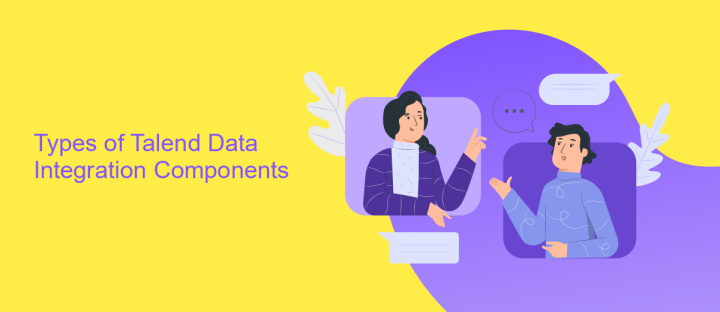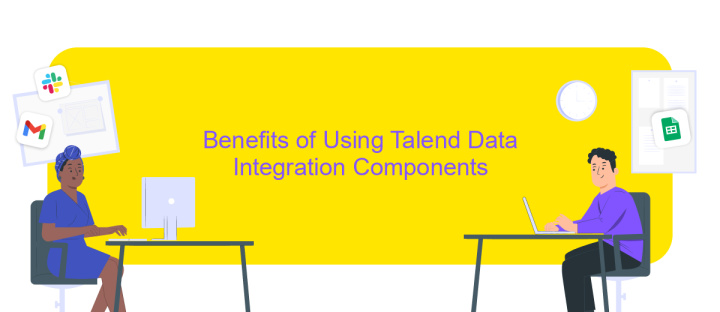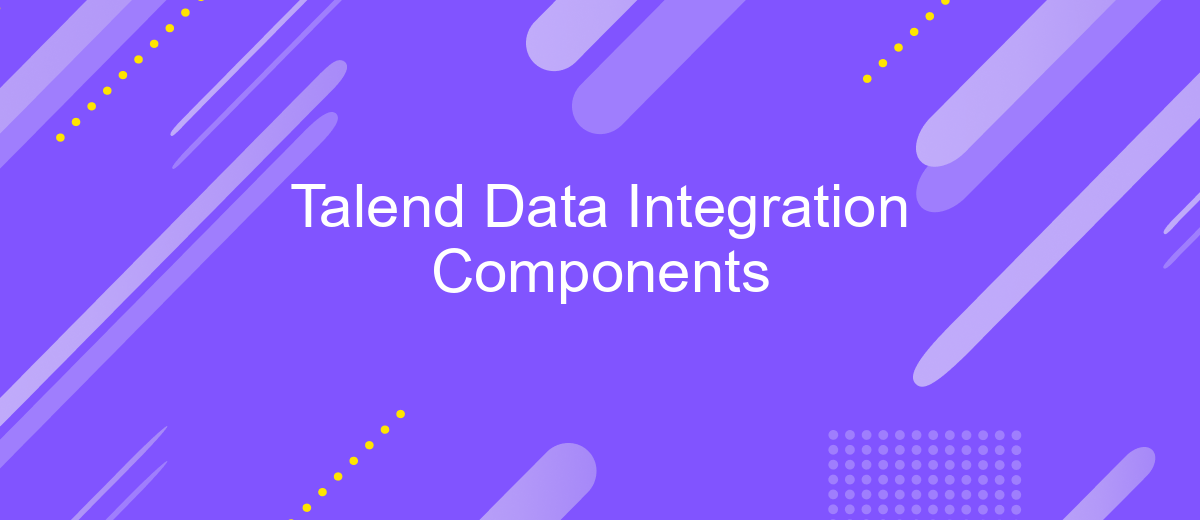Talend Data Integration Components
Talend Data Integration Components are essential tools for managing and transforming data within an organization. These components facilitate seamless data integration, enabling businesses to efficiently extract, transform, and load (ETL) data from various sources. By leveraging Talend's robust suite of tools, organizations can ensure data accuracy, improve operational efficiency, and drive informed decision-making processes. Discover how Talend can revolutionize your data integration strategy.
Introduction to Talend Data Integration Components
Talend Data Integration Components are essential tools for designing and executing data integration workflows. These components simplify the process of extracting, transforming, and loading data from various sources into a target destination. With Talend, users can manage complex data integration tasks efficiently and with greater ease.
- Input Components: Used to read data from different sources such as databases, files, and APIs.
- Processing Components: Facilitate data transformation, including filtering, sorting, and aggregating data.
- Output Components: Enable writing data to target systems like databases, files, or other applications.
- Orchestration Components: Help in managing the workflow and controlling the execution order of various tasks.
By leveraging Talend Data Integration Components, organizations can streamline their data workflows, ensuring data consistency and accuracy. These components support a wide range of connectors and transformation options, making Talend a versatile solution for diverse data integration needs.
Types of Talend Data Integration Components

Talend Data Integration offers a variety of components to streamline data processes. These components can be broadly categorized into Input, Output, Transformation, and Utility components. Input components help in extracting data from different sources like databases, files, and APIs. Output components, on the other hand, are used to load the processed data into various destinations such as databases, files, and cloud storage. Transformation components are crucial for data manipulation, allowing for tasks like filtering, sorting, and aggregating data. Utility components provide additional functionalities such as logging, error handling, and flow control.
Moreover, integration services like ApiX-Drive can complement Talend's components by offering seamless API integrations. ApiX-Drive allows users to connect various applications and automate data transfers without requiring extensive coding knowledge. This can significantly enhance the capabilities of Talend Data Integration by providing more flexible and dynamic data flows. Utilizing both Talend and ApiX-Drive, businesses can achieve a more robust and efficient data integration system, ensuring that data is consistently accurate and up-to-date across all platforms.
Benefits of Using Talend Data Integration Components

Talend Data Integration Components offer a comprehensive suite of tools designed to streamline and enhance data management processes. These components enable businesses to efficiently extract, transform, and load data from various sources, ensuring data consistency and reliability across the organization.
- Ease of Use: Talend's intuitive drag-and-drop interface simplifies the design and execution of data integration workflows, reducing the need for extensive coding knowledge.
- Scalability: The platform supports a wide range of data volumes and complexities, making it suitable for both small businesses and large enterprises.
- Real-Time Data Processing: Talend allows for real-time data integration, enabling timely decision-making and up-to-date analytics.
- Cost Efficiency: As an open-source solution, Talend provides a cost-effective alternative to proprietary data integration tools, reducing overall IT expenditure.
- Extensive Connectivity: Talend supports numerous data sources and destinations, including databases, cloud services, and applications, ensuring seamless data flow across systems.
By leveraging Talend Data Integration Components, organizations can achieve higher data quality, improved operational efficiency, and enhanced business intelligence capabilities. This robust platform empowers users to handle complex data integration challenges with ease, driving better data-driven outcomes.
How to Use Talend Data Integration Components

Talend Data Integration Components are essential tools for streamlining data processes and enhancing data management. These components allow users to extract, transform, and load data from various sources to different destinations efficiently.
To use Talend Data Integration Components effectively, you need to follow a few key steps. Begin by designing your job in Talend Studio, where you can drag and drop components to create a workflow. Configure each component according to your data requirements and ensure that the connections between components are correctly established.
- Open Talend Studio and create a new job.
- Drag and drop the required components onto the workspace.
- Configure the components by setting their properties.
- Connect the components to define the data flow.
- Run the job to execute the data integration process.
After configuring and connecting the components, you can run the job to see the results. Talend provides detailed logs and error messages to help you troubleshoot any issues. By following these steps, you can efficiently manage and integrate your data using Talend Data Integration Components.
Conclusion
In conclusion, Talend Data Integration Components play a crucial role in simplifying and streamlining the data integration process. By providing a comprehensive suite of tools, Talend enables organizations to efficiently manage and transform their data, ensuring that it is both accurate and accessible. These components offer robust capabilities for data extraction, transformation, and loading (ETL), making it easier for businesses to integrate data from various sources and improve decision-making processes.
Additionally, services like ApiX-Drive can further enhance the efficiency of data integrations by automating the transfer of data between different applications and systems. This not only saves time but also reduces the likelihood of errors, ensuring that data remains consistent and reliable. By leveraging both Talend and ApiX-Drive, organizations can achieve a higher level of data integration and operational efficiency, ultimately driving better business outcomes.
FAQ
What are Talend Data Integration Components?
How do you configure a connection to a database in Talend?
Can Talend Data Integration handle real-time data processing?
What is the purpose of the tMap component in Talend?
How can I automate and schedule Talend integration jobs?
Apix-Drive is a universal tool that will quickly streamline any workflow, freeing you from routine and possible financial losses. Try ApiX-Drive in action and see how useful it is for you personally. In the meantime, when you are setting up connections between systems, think about where you are investing your free time, because now you will have much more of it.

